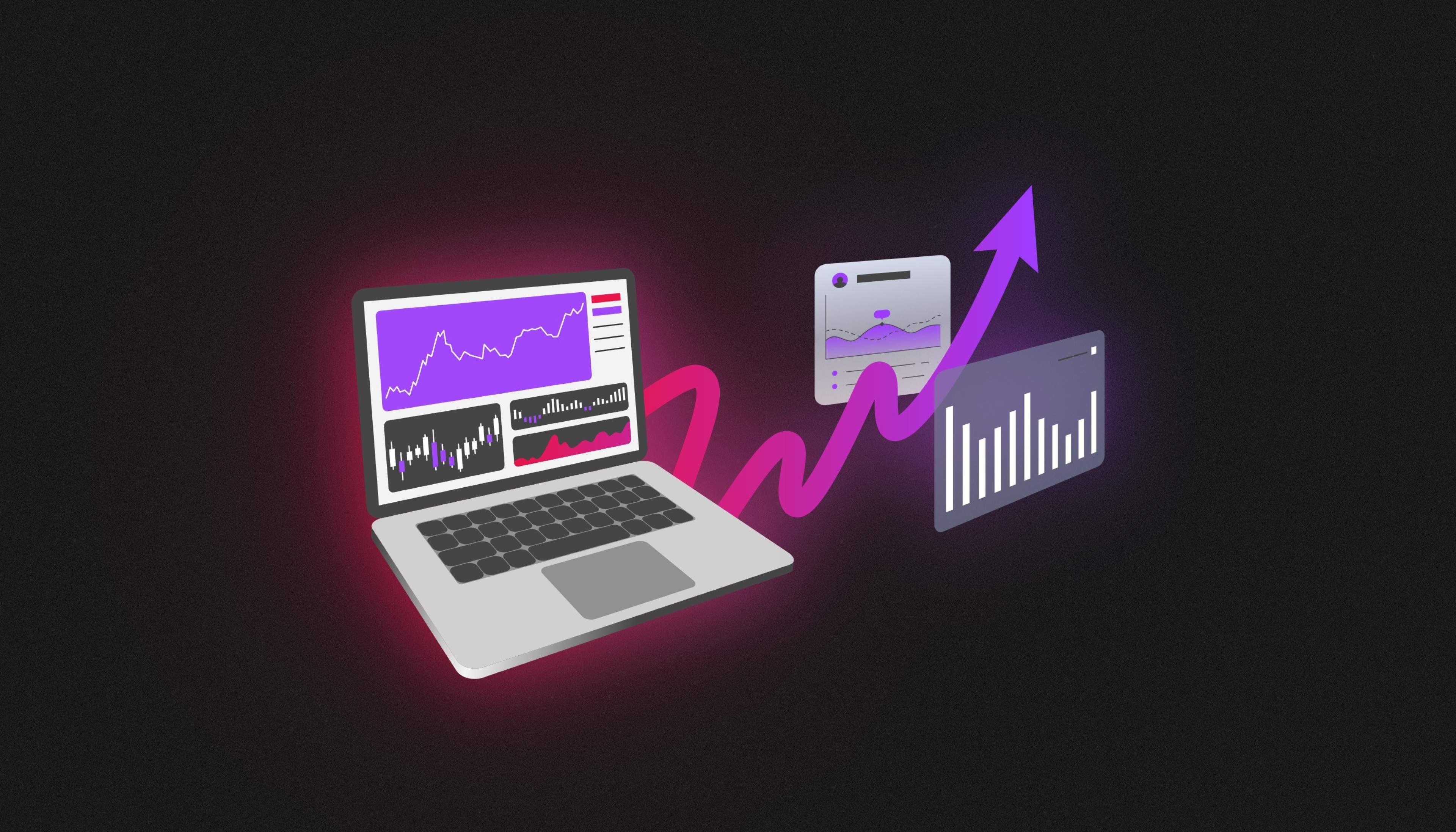What if the next leap forward for your business isn’t a new product line or a bigger sales team, but a strategic use of technology that reshapes how you operate and how your customers experience your brand? In the world of mid-market industrial manufacturing and logistics, the rules of competition are changing. Technology is no longer just a supporting player–it’s the lever that can catapult your company ahead of the pack.
The new strategic imperative: technology at the core
For decades, business strategy in industrial sectors was built on three pillars: product leadership, operational excellence, and customer intimacy. Today, technology is the common thread that weaves through all three. Whether you’re aiming to streamline your operations, create unique customer experiences, or unlock new revenue streams, technology is the enabler–and often the differentiator.
But integrating technology into your business strategy isn’t about chasing every new trend or tool. It’s about making deliberate choices: understanding where technology can truly set you apart and where it simply helps you keep pace. The companies that thrive are those that align their technology investments with their core business strategy, using digital tools to amplify strengths and shore up weaknesses.
Defining differentiation in the digital Age
Differentiation means being meaningfully different in ways your customers care about. In industrial manufacturing and logistics, this can mean faster delivery times, higher product quality, better customer service, or more reliable operations. Technology allows you to push these boundaries further than ever before.
Key questions to guide your differentiation strategy:
What are the most important decision factors for your customers?
Where do competitors fall short, and what are the industry’s pain points?
Which processes or experiences, if dramatically improved, would make you the obvious choice?
By answering these questions, you can identify where technology can have the biggest impact. Most people think of digital marketing, portals, and ecommerce as the ways to differentiate with digital. While this is the case for some, many organizations find unique ways to win by executing their behind-the-scenes workflows in innovative ways.
Customer-facing differentiation: technology as the experience
Today’s industrial customers expect more than just products delivered on time. They want visibility, responsiveness, and a sense that their needs are understood and anticipated. Technology enables you to deliver on these expectations in ways that build loyalty and set you apart from competitors.
Digital touchpoints
Customer-facing technology can take many forms:
Self-service portals that allow customers to place orders, track shipments, and access documentation at their convenience
Mobile applications that provide real-time updates, notifications, and easy communication with your team
Automated quoting and ordering systems that reduce friction and speed up the sales process
Personalized dashboards that give customers insights into their order history, usage patterns, or service metrics
These tools don’t just make life easier for your customers–they also create a “stickiness” that makes it harder for them to switch to a competitor. When your digital experience becomes part of their workflow, you move from being a vendor to being a partner.
The best customer experiences unify their digital and person touchpoints. Service design is a great methodology to intentionally architect cross-channel experiences. When a personal connection can be made that helps augment the digital experience, trust grows-and so does your reputation.
Data-driven insights
By capturing and analyzing data from customer interactions, you can anticipate needs, recommend solutions, and even identify opportunities for new services. Over time, this data-driven approach deepens your understanding of your customers and allows you to deliver more tailored, valuable experiences.
Operational differentiation: technology as the engine
While customer-facing technology gets much of the attention, operational technology is often where the biggest gains–and the most sustainable differentiation–are found. Streamlining processes, reducing errors, and increasing efficiency can all be achieved through thoughtful technology integration.
Automation and robotics
Automating repetitive tasks–whether in the warehouse, on the shop floor, or in the back office–frees up your team to focus on higher-value work. Robotics and process automation can improve accuracy, speed, and safety, while also making it easier to scale operations as your business grows.
Data integration and visibility
Siloed data is the enemy of efficiency. By integrating data across your systems–ERP, CRM, inventory, production, and logistics–you create a single source of truth that enables faster, better decision-making. Real-time dashboards and analytics help managers spot issues before they become problems and identify trends that can inform strategic decisions.
Predictive maintenance and quality control
Advanced analytics and machine learning can help you move from reactive to proactive operations. Predictive maintenance tools analyze equipment data to forecast failures before they happen, reducing downtime and maintenance costs. Quality control systems can flag potential defects earlier in the process, improving product consistency and reducing waste.
Supply chain optimization
Technology enables more agile, responsive supply chains. By connecting with suppliers and logistics partners digitally, you can optimize inventory levels, reduce lead times, and respond more quickly to changes in demand or disruptions.
The strategy canvas: mapping your differentiation
A powerful way to visualize your technology-driven strategy is to create a “strategy canvas.” List the key factors that matter most in your industry–speed, reliability, price, service, digital experience, and so on. Then, plot your performance (and that of your competitors) on each factor.
This exercise helps you see where you’re leading, where you’re lagging, and where technology can help you create a unique value curve. The goal isn’t to be the best at everything, but to be the best at the things your chosen customers care about most.
Custom software vs. SaaS: making the right choice
One of the most important strategic decisions you’ll face is whether to build custom software or adopt Software-as-a-Service (SaaS) solutions. Each approach has its strengths and trade-offs, and the right choice depends on your goals, resources, and the role technology plays in your differentiation strategy. Based on decades of experience, we recommend a hybrid approach: use SaaS for standard functions, and invest in custom software where differentiation matters most. This balances cost, speed, and strategic impact.
Custom software: when you want to win
Custom software is built specifically for your business, tailored to your unique processes, workflows, and requirements. It’s the right choice when you want to create a capability that competitors can’t easily replicate–something that becomes a true source of competitive advantage.
Custom software makes sense when:
Your processes are unique or proprietary, and off-the-shelf solutions can’t support them.
You want full control over features, integrations, and the user experience.
Technology is central to your differentiation strategy–not just a support function.
You’re willing to invest in development, maintenance, and ongoing enhancements.
The payoff? Custom solutions can help you leapfrog competitors, create new business models, and deliver experiences that are impossible with generic tools. But they require a clear vision, disciplined project management, and a commitment to continuous improvement.
SaaS: When you want to be good
SaaS solutions are cloud-based, subscription services that offer standardized features and rapid deployment. They’re ideal for business functions where you simply need to be competent-not differentiated.
SaaS is the better choice when:
The process is common across the industry (e.g., HR, accounting, basic CRM).
Speed and cost-effectiveness are priorities.
You want to minimize IT overhead and focus resources elsewhere.
Integration with other systems is straightforward.
SaaS allows you to quickly adopt best practices, benefit from regular updates, and scale as your business grows. The trade-off is less flexibility and less potential for unique differentiation.
Building a technology-driven culture
No matter how powerful your technology, it won’t deliver results unless your people embrace it. Building a technology-driven culture is about more than tools; it’s about mindset, skills, and leadership.
Leadership and vision
Leaders must set the tone by articulating a clear vision for how technology will drive the business forward. This means not just approving budgets but actively championing digital initiatives, celebrating wins, and holding teams accountable for results.
Change management
Adopting new technology often means changing how people work. Invest in change management: communicate the “why,” provide training and support, and involve employees in the process. Early wins can build momentum and help overcome resistance.
Talent and skills
As technology evolves, so must your workforce. Upskilling and reskilling employees ensures they can leverage new tools and adapt to changing business needs. Consider partnerships with educational institutions, online training, and internal mentoring programs.
Cross-functional collaboration
Technology projects often cut across traditional departmental boundaries. Encourage collaboration between IT, operations, sales, and customer service to ensure solutions meet real business needs and are adopted successfully.
Measuring success: metrics that matter
To ensure your technology investments are driving differentiation, track key performance indicators aligned with your strategic goals. Examples include:
Customer satisfaction and retention rates
Order-to-cash cycle time
Equipment uptime and maintenance costs
Inventory turnover and supply chain responsiveness
Employee productivity and engagement
Regularly review these metrics, share results with your team, and use the insights to refine your approach.
Overcoming common pitfalls
While the promise of technology is great, the path to differentiation is not without challenges. Common pitfalls include:
Chasing shiny objects: Not every new technology is right for your business. Focus on solutions that align with your strategy and deliver real value.
Underestimating complexity: Technology projects can be complex and disruptive. Invest in planning, project management, and change management.
Neglecting integration: Siloed systems limit the benefits of technology. Prioritize data integration and visibility.
Failing to scale: Pilot projects are valuable, but real impact comes from scaling successful initiatives across the organization.
By anticipating these challenges and addressing them proactively, you can maximize the return on your technology investments.
Your roadmap to tech-driven dominance
Ready to put technology at the heart of your differentiation strategy? Here’s a step-by-step roadmap:
Assess your current state: Audit your processes, systems, and customer touchpoints to identify strengths, weaknesses, and opportunities.
Define your differentiation strategy: Clarify where you want to lead and how technology can help you get there.
Prioritize initiatives: Focus on high-impact areas-whether customer-facing or operational-where technology can deliver measurable results.
Choose the right technology approach: Decide where to build custom solutions, where to leverage SaaS, and where a hybrid approach makes sense.
Engage your people: Invest in change management, training, and communication to ensure adoption and buy-in.
Measure and iterate: Track key metrics, learn from results, and continuously refine your approach.
Scale success: Expand successful pilots across the organization, and look for new opportunities to leverage technology for differentiation.
Conclusion: technology as your differentiator
The window for technology-driven differentiation is wide open, but it won’t stay that way forever. As digital tools become more accessible, the gap between leaders and laggards will only widen. The companies that thrive will be those that make technology a core part of their business strategy, using it to create unique value for customers and operate with greater agility and efficiency.
Are you ready to move beyond the status quo and build a technology-driven advantage that lasts?
Contact us today to schedule a strategy session. We’ll help you identify your highest-impact opportunities, build a clear roadmap, and turn technology into your next competitive edge. Let’s engineer your future together.
About the author:
Adam Schanfield is a Principal Strategist at TXI. He works with clients to envision, plan, and govern their efforts to differentiate with digital, data, and AI. He is based in TXI’s Chicago headquarters.




